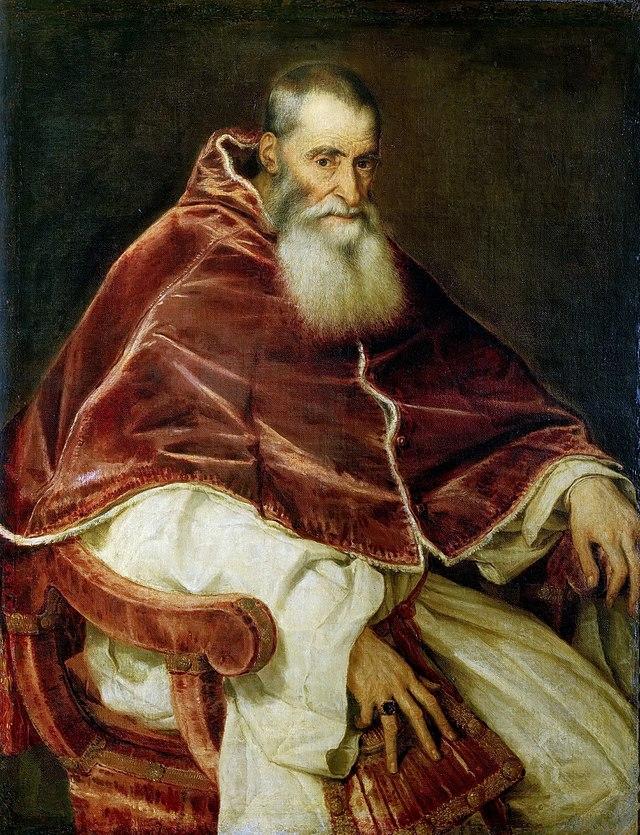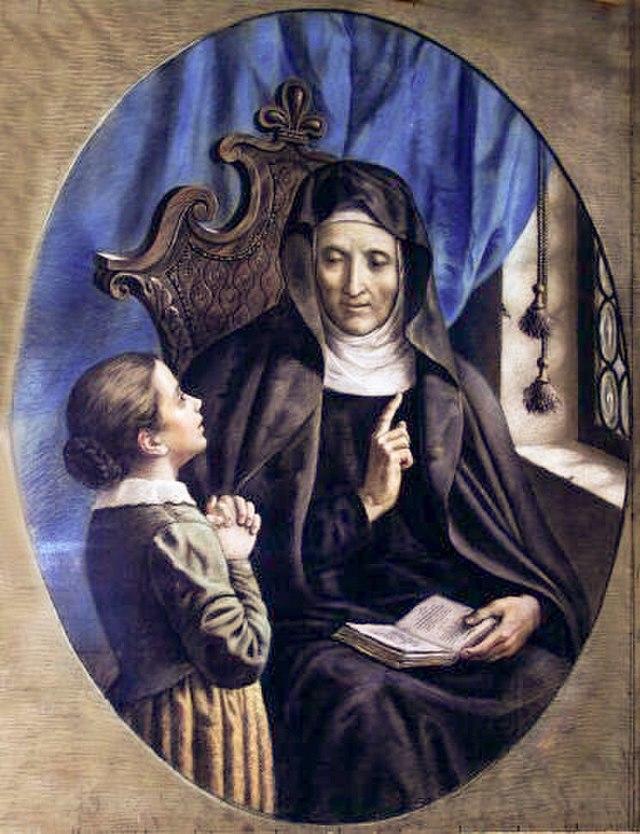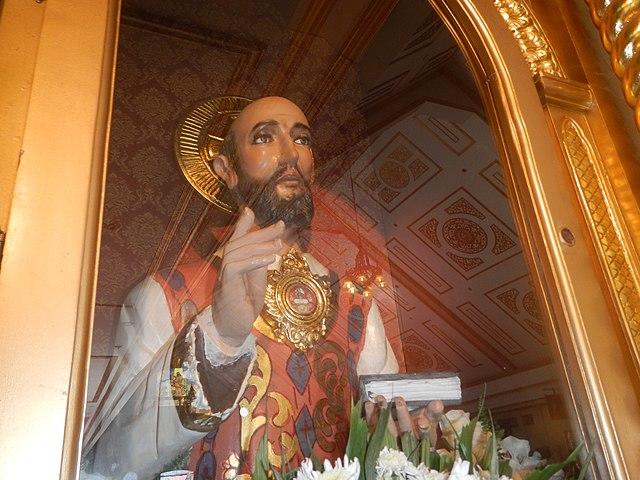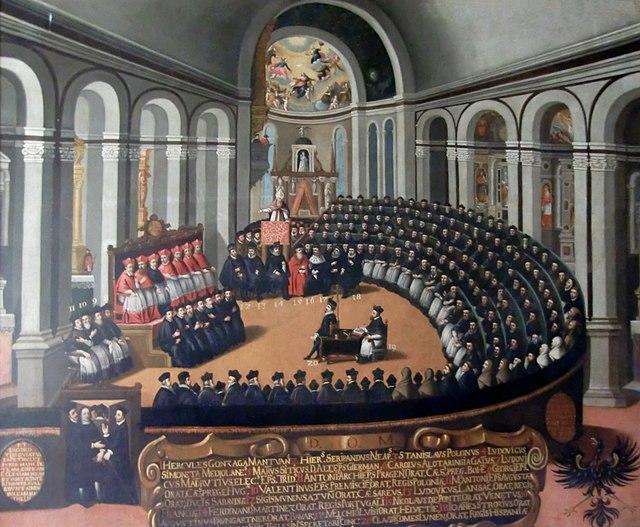Chapters
The Catholic Reformation or Counter-Reformation, which took place from 1531 to 1564, marked an important chapter in the history of the Church. All in all, it was a period aimed at rejuvenating the Church's practices and beliefs in light of the many challenges that were posed by the Protestant Reformation.
This fascinating era would go on to be shaped by a whole host of influential leaders and key events, most notably the Council of Trent, who’s actions would have a massive impact on Europe's religious and political landscape forever.
Let's explore this together below, taking a look at everything from the influence of notable popes, the emergence of new religious movements, and reasons why the Council of Trent's legacy still continues to resonate within the Church today.

How Did the Papacy Start the Catholic Reformation?
The Catholic Reformation would officially begin with the papacy of Paul III. A particularly devout man, Paul III would go on to pen a condemning report on the state of the church.
Known as the “Consilium de Emendanda Ecclesia” the report painted an incredibly bleak picture of the ongoing widespread corruption amongst the church and why reform was needed.
Seeking to put an end to the corruption, Paul III would go on to create the Roman Inquisition, an institution whose main goals were to stamp out heresy and ensuring that the teachings of the church were being strictly followed and adhered to by both the rich and poor.
From here, the pope then began to appoint various like-minded cardinals such as Gasparo Contarini and Reginald Pole to powerful and influential positions within the church.
Soon after his death, Paul III’s successor, Paul V would also continue this work by massively increasing the strength and scope of the Roman Inquisition.
Unfortunately, after appointing his close friend and associate Cardinal Michele Ghislieri (who later became Pope Pius V) as inquisitor general, the Inquisition only became more and more aggressive in rooting out heresy. In fact, it wasn’t against using torture and other harsh methods to extract confessions from the unlucky souls it deemed guilty.

What Role Did Religious Orders Play in the Church's Spiritual Regeneration?
The spiritual regeneration of the Catholic Church during the Reformation era was massively influenced by the emergence of several new important religious orders. But what were these orders and what did they seek to achieve?
Arguably one of the most important was the Capuchin Friars, a branch of the Franciscan order which had been founded in 1525. The Capuchins were extremely popular with the poor and destitute due to their commitment to living in poverty and serving the most marginalized members of society. What's more, they were also known for their very simple lifestyle, often wearing rough brown robes and going barefoot at all times.
Similarly, the Ursulines, founded by Angela Merici in 1535, was another notable order that primarily focused on educating girls and helping the sick and needy. By setting up schools and covenants all across Europe, the Ursulines played a big part in spreading catholic education to the masses, while also empowering the role of women within the church.

Who was Ignatius of Loyola?
By far the most influential of all the orders was the Society of Jesus, also known as the Jesuits, which was founded by Ignatius of Loyola in 1540. A Spanish nobleman and former soldier, Loyola had experienced a sort of spiritual awakening during surgery, going on to devote his life to the church as a result. Fervent in his faith, he and his followers took on vows of poverty, chastity, and obedience, as well as a special vow of loyalty to the pope himself.
One of the Jesuits' primary focuses was education, and they went on to establish numerous schools and universities far and wide across Europe which combined catholic teachings with more classical forms of learning.
In addition to their educational efforts, the Jesuits also played a crucial role in the church's missionary activities as well. In an effort to spread Catholicism all over the globe, missionaries were sent out to spread the word of god, landing in multiple countries across Asia, Africa, and the Americas.
Over time, the Jesuits would slowly but surely evolve into one of the church's most crucial and effective tools in the fight against the threat of Protestantism.

What Was the Council of Trent?
The Council of Trent, which took place between the years of 1545 and 1563, would be responsible for ushering in some of the most defining changes in the long history of the Catholic Church.
Essentially, the council was called in response to the challenges posed by the Protestant Reformation, a religious movement that was continuing to question many of the church's teachings and practices. But what happened during these meetings?
In the first meeting (1545-1547) it was declared that the church's teachings were based on both the bible and church tradition, going against the Protestants' belief of “sola scriptura” which essentially stated that only the bible should be used as a source of religious truth.
When the second session rolled around (1551-1552), the council reaffirmed the Catholic belief in the seven sacraments and their ability to provide God's grace. Alongside this, they also clarified things like the doctrine of transubstantiation, stating that during the Eucharist, the bread and wine truly become the body and blood of Christ. This teaching showed the stark differences between Catholics and Protestants, with both parties holding radically different views on the nature of the Eucharist.
In the final meeting (1562-1563), plans to improve the education and overall behaviour of priests were also implemented as well. This move included things like the creation of seminaries that could provide better training for priests and the requirement that all bishops must live in the dioceses they were responsible for.

What Was the Impact of the Catholic Reformation by 1564?
While the impact of the Council of Trent's decrees would mark a huge turning point for the Catholic Church as a whole, public opinion across the rest of Europe was rather mixed.
For example, in largely Catholic regions like Italy and Spain the new changes were celebrated and quickly adopted into the local religious landscape without much trouble at all.
However, in countries like Germany and England where Protestantism had already taken root, the changes were not very well received. In fact, it was not unusual for Protestant rulers to view the decrees as a threat to their authority and were not afraid to resist their implementation entirely. Nowhere was this more apparent than in France, where tensions between Catholics and Huguenots (French Protestants) would slowly but surely begin to reach a fever pitch.
Conclusion
In conclusion, the Catholic Reformation was an incredibly important event for the Church. Kickstarted by various like-minded popes, the rise of new religious orders like the Jesuits, and the decisions made at the Council of Trent, this period in history came about in an effort to bring the Church back to its old roots. Although many of the new reforms were welcomed with open arms in some parts of Europe, elsewhere they also faced stiff resistance as well. But despite the challenges, the Catholic Reformation set the stage for a revitalized Church, eventually going on to change European history forever.









